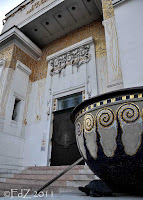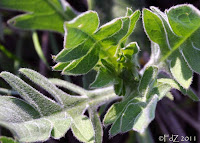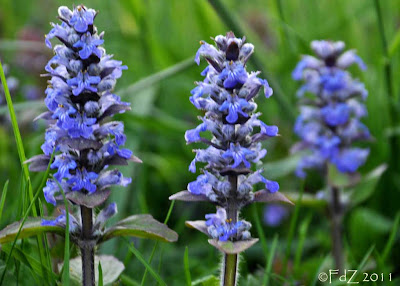Vienna, Austria, 2011
April 30, 2011
April 29, 2011
[SkyWatch] Traffic in Sunset
I am very fond of driving long distances in a car. I'd go so far as to say that the love of road trips is in my DNA. The smaller the road the better. But here I talk of country driving. Think Blue Highways by William Least Heat-Moon, who traveled around the USA on small, out-of-the-way roads to discover the heart of his country as well as himself.
In contrast, big urban centers around the globe are now so congested that city driving is barely tolerable. But perhaps, just perhaps, sitting behind the wheel would not be so bad when you can witness a sunset like this while waiting at a traffic light.
Bucharest, 2011
Here I watched the traffic and the sun going down on Piata Victoriei in Bucharest. And as I turned to go home, I still saw the soft reflection of the final rays on the clouds.
This post is linked with other photo bloggers who appreciate skies at SkyWatch Friday and reflections at Weekend Reflections.
April 28, 2011
B is for Busker
Stephansplatz (St Stephen's Square) is called the heart and soul of Vienna. The cathedral is the key historical landmark, and an imposing one it is.
Yet for me it's the various street entertainers there who put the smile on my face. I admire the courage of these buskers in displaying their talents to earn a living only from the generosity of appreciative audiences.
Vienna, 2011
B is the letter of the week at Jenny's Alphabe-Thursday and I link to the players with these buskers.
April 26, 2011
[MyWorld] Schönbrunn Palace
Some people can escape the hot city life in summer to a small cabin by the lake (just saying). Other people go to a summer residence on a massive acreage. Like the 1400-room Schönbrunn Palace in Austria. But you'd have to be royalty.
Vienna, 2011
Between the palace and Neptune Fountain are 32 statues of deities and virtues. And behind the fountain, still farther up on the hill, is a rather useless structure, in my opinion, called Gloriette, designed and built to glorify Habsburg power. Today it is a café serving the throngs of locals and tourists ambling the grounds.
Looking back down from the fountain you get a better picture of the size of this palace. Contrast it to the buildings in the city behind it.
The history of this imperial summer residence goes back to 1569. It holds various styles of large gardens, an arboretum and a forest that was used as a hunting ground. But the only animals I saw wouldn't be of much interest to hunters. Oh, and there is a children's zoo that I did not enter.
Call me crazy, but given a choice (and I've been told I do have a few drops of blue blood in my veins), I'd take the cabin. The trappings associated with this life are much too restrictive for my tastes.
And this was part of my world this week, so I am linked with MyWorld Tuesday where many others share a peek into their corner of the world.
And this was part of my world this week, so I am linked with MyWorld Tuesday where many others share a peek into their corner of the world.
April 24, 2011
Vienna Bridges over Danube
According to this list, there are 20 bridges crossing the Danube in the city limits of Vienna alone. Did I catch half of them in this shot I took this evening from Kahlenberg minutes before the sun said goodbye for the day?
April 23, 2011
Café de l'Europe Reflections
It's time for Weekend Reflections... and here is what I found in Vienna for James and our community of reflection hunters.
Sitting on a terrace on a warm day to sip espresso and watch the world go by is as normal to the Viennese as it is to Parisians. Café de l'Europe on Graben, the most famous street in Vienna's city center, is enclosed in glass... giving me a wonderful reflection of the sun shining on the buildings behind, including a spiral and the north tower of Vienna's landmark, Stephansdom (St Stephen's Cathedral), on the right.
And a slightly longer view so you can see a bit more of the setting.
Vienna, 2011
April 22, 2011
[SkyWatch] Under a Cloudless Sky
Charlie Brown: I'm depressed, Linus. I need an encouraging word to cheer me up.
Linus: Happiness lies in our destiny like a cloudless sky before the storms of tomorrow destroy the dreams of yesterday and last week.
Charlie Brown: I think that blanket is doing something to you.
Linus: Happiness lies in our destiny like a cloudless sky before the storms of tomorrow destroy the dreams of yesterday and last week.
Charlie Brown: I think that blanket is doing something to you.
- Charles Schultz in Snoopy Come Home
Austria, 2011
All was glorious — a cloudless sky above, a most delicious view around. . . . How great is our good fortune! I care not what may be the condition of the earth; it is the sky that is for me now.What can I say? Such have been my skies all week.
- Jacques Alexandre Cesare Charles,
first free flight in a manned
hydrogen balloon, 1 December 1783
Joining the sky watchers at SkyWatch Friday.
April 21, 2011
A is for Austrian Art Nouveau Architecture
You don't need to be an architecture buff to appreciate the work of the artistically avant-garde movement that appeared in Europe at the turn of the 20th century. The Art Nouveau movement followers subscribed to the principle that the essence of aesthetics should be sought in nature rather than ancient Classicist renditions.
In Austria, the movement of painters, sculptors and architects was established in 1897 and was first lead by the now famous artist Gustav Klimt. They were called the Vienna Secession.
Among the eminent architects of this movement was Otto Wagner. These are a few of the key buildings in Vienna he designed. As usual, photos can be enlarged.
In Austria, the movement of painters, sculptors and architects was established in 1897 and was first lead by the now famous artist Gustav Klimt. They were called the Vienna Secession.
Among the eminent architects of this movement was Otto Wagner. These are a few of the key buildings in Vienna he designed. As usual, photos can be enlarged.
The Austrian Postal Savings Bank, c.1906. The plain marble and granite exterior is embellished with aluminum ornamentation. Wagner designed the inside, too.
Vienna, 2011
The Karlsplatz Stadbahn Station (city train station), c.1899, steel framework and marble with stylized Hydrangea.
Wagner Haus, a white plastered façade with golden stucco elements (didn't find the year it was built, but probably 1898-99).
And right next to it, the Majolica House, c.1899, named after the flowered tile which covers the façade.
Both these buildings were considered "hideous beyond measure" at the time they were built. What do you think?
The Secession building - designed by architect Joseph Maria Olbrich, co-founder of the Vienna Secession - is considered by some the icon of the movement. Above its entrance was carved the phrase "to every age its art and to art its freedom". The portal was designed by Klimt and the owls detail on the side of the building by artist Koloman Moser.
A is the letter of the week at Jenny's Alphabe-Thursday. And Art Nouveau is what I searched for on my walk through Vienna today. My walk was long, and so is my post. Does Art Nouveau appeal to you?
April 20, 2011
N is for Nature
You have to hand it to Mother Nature... when she is good, and I can't say she always is, she is, well, simply awesome.
This week I'm lodging at my brother's home in charming countryside not far from Vienna, Austria. His house overlooks a hill with a large field of grass and late this afternoon, as the sun was starting its exit for the day, I grabbed my camera and went exploring.
The big picture is wonderful, with softly rolling hills and flower trees in bloom. If country living suits you, it doesn't get much more pleasant than this.
Austria, 2011
But today I had my eyes focused mainly on the little stuff beneath my feet. I wish I had a macro lens for this, but I think you'll get the idea. All images can be enlarged.
And I wasn't the only one out there enjoying the sun and fresh air and wonders of nature.
This post joins the community at ABC Wednesday where the letter of the day is N.
April 17, 2011
Magnolia Tree
Sometimes you think you've already seen the best of whatever there is to see of a certain thing, and then wham! you're presented with one just a bit more awesome, more glorious, more stupendous...
That's the feeling I had when I spotted this magnolia tree at the end of a side street on one of my recent walks. I had seen many magnolias before, but this was definitely the largest, fullest specimen of its kind I recall ever laying my eyes on. It was taller than the two-floor house behind it, branching well above the tall wall that enclosed it. My heart sang.
Bucharest, 2011
One of the fun parts of blogging for me is researching a little about what I photograph and post here. I've learned, for instance, that the magnolia is an ancient flowering plant that evolved millions of years ago before bees and were pollinated by beetles, hence their tough leaves and carpels. There are more than 200 species of the Magnoliaceae plant family and they are found abundantly in warm climates from Asia and the Americas to the West Indies.
Linking with Today's Flower, Mosaic Monday and Macro Monday. The montage will enlarge if you click on it once, then once again.
Subscribe to:
Posts (Atom)


















































